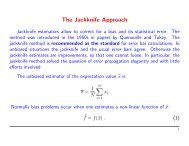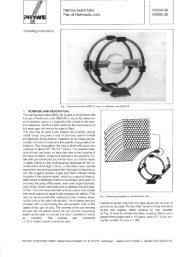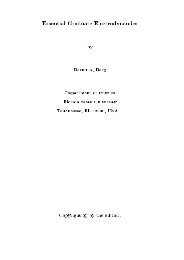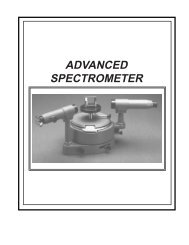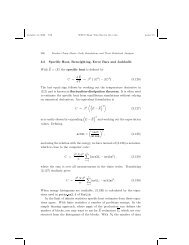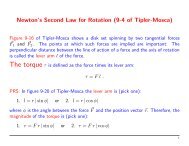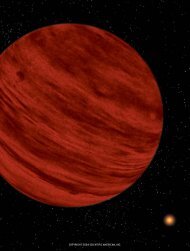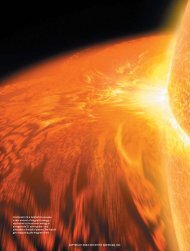The Stellar Dynamo - Scientific American Digital
The Stellar Dynamo - Scientific American Digital
The Stellar Dynamo - Scientific American Digital
- No tags were found...
You also want an ePaper? Increase the reach of your titles
YUMPU automatically turns print PDFs into web optimized ePapers that Google loves.
NATIONAL SOLAR OBSERVATORY/SACRAMENTO PEAK; NATIONAL SOLAR OBSERVATORIES/KITT PEAK (inset)<br />
SUNSPOTS are relatively cool regions formed where magnetic fields<br />
emerge from the sun, thereby suppressing the upwelling of hot gases<br />
from the interior. Elsewhere on the surface, tightly coiled cells of<br />
cyclonically flowing gases show up as granules. Near a sunspot the<br />
Sunspots<br />
THE EARLIEST KNOWN sunspot records<br />
are Chinese documents that go<br />
back 2,000 years, preserving observations<br />
made by the naked eye. From 1609<br />
to 1611 Johannes Fabricius, Thomas<br />
Harriot, Christoph Scheiner and Galileo<br />
Galilei, among others, began telescopic<br />
studies of sunspots. <strong>The</strong>se records, as<br />
German astronomer Samuel Heinrich<br />
Schwabe announced in 1843, displayed<br />
a prominent periodicity of roughly 10<br />
years in the number of observed sunspot<br />
groups. By the 20th century George<br />
magnetic fields organize the gaseous flow into lines resembling iron<br />
filings near a bar magnet. <strong>The</strong> magnetogram (inset) shows field lines<br />
emerging at one sunspot (yellow) and reentering at another (blue);<br />
such sunspot pairs are common.<br />
Ellery Hale of the Mount Wilson Observatory<br />
in California found those dark<br />
surface irregularities to be the seat of intense<br />
magnetic fields, with strengths of<br />
several thousand gauss. (Earth’s magnetic<br />
field is, on the average, half a gauss.)<br />
Sunspots appear dark because they<br />
Sunspot Number<br />
Maunder minimum<br />
1620 1640 1660 1680 1700 1720 1740 1760 1780 1800 1820 1840 1860 1880<br />
MAXIMUM<br />
MINIMUM<br />
ELEVEN-YEAR CYCLES of sunspot activity were interrupted between 1645 and 1715<br />
by a period of quiescence. This dearth of sunspots, called the Maunder minimum,<br />
coincided with unusually cool temperatures across northern Europe, indicating that<br />
solar fluctuations influence Earth’s climate. <strong>The</strong> regular pulsing of the sun’s activity<br />
(right) was observed over one cycle at the Paris Observatory. <strong>The</strong>se photographs were<br />
taken in violet light emitted by ionized calcium; the technique that produced them is<br />
now used to study the magnetic activity of other stars.<br />
1979 1982 1986<br />
36 SCIENTIFIC AMERICAN THE SECRET LIVES OF STARS<br />
COPYRIGHT 2004 SCIENTIFIC AMERICAN, INC.



